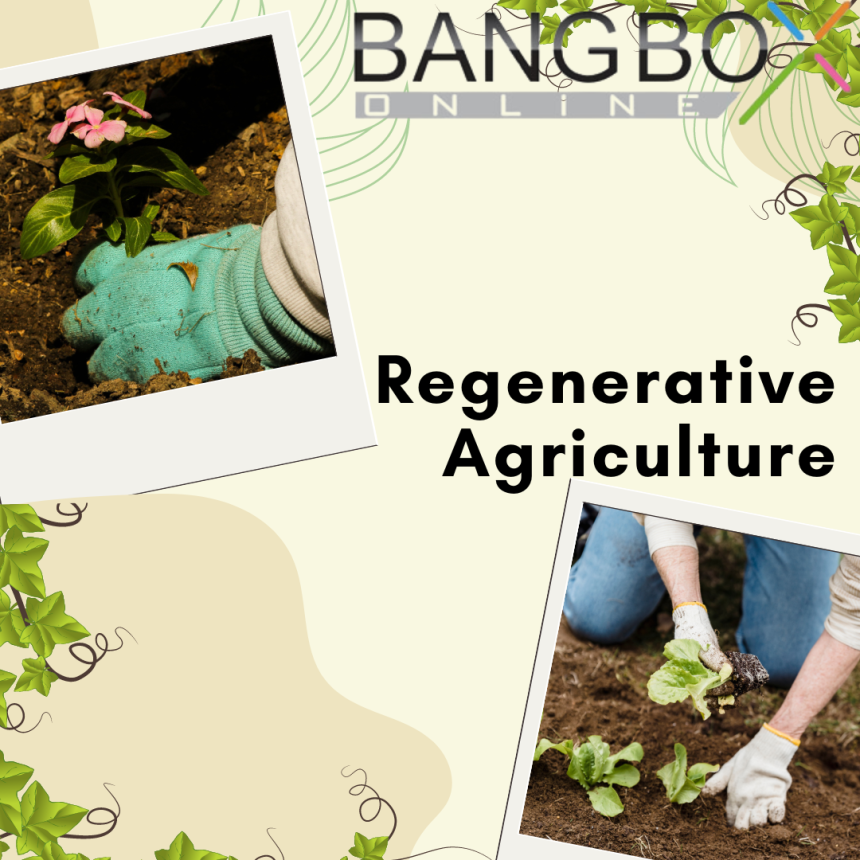
Regenerative Agriculture
Redefining Sustainable Farming
Regenerative agriculture is an innovative approach to farming that goes beyond sustainability by actively improving and revitalizing the health of the soil, ecosystems, and communities. Unlike conventional farming practices that often deplete the land and rely heavily on chemical inputs, regenerative agriculture emphasizes the restoration of soil health, biodiversity, and the natural cycles of the environment. This holistic method of farming is increasingly recognized as a vital solution to some of the most pressing issues facing our food systems and the planet, including climate change, biodiversity loss, and soil degradation.
The Core Principles of Regenerative Agriculture
Regenerative agriculture is based on several key principles designed to enhance the resilience of agricultural systems:
- Soil Health: At the heart of regenerative agriculture is the commitment to improving soil health. Healthy soil is rich in organic matter and teeming with microbial life, which helps sequester carbon, retain water, and provide nutrients for plants. Practices like cover cropping, reduced tillage, and composting are used to build up organic matter and promote a vibrant soil ecosystem.
- Biodiversity: Regenerative farming encourages the cultivation of diverse crops and the integration of animals into farming systems. This biodiversity helps to create a more resilient agricultural system by reducing pest pressure, improving pollination, and enhancing soil health. Crop rotation and polyculture (growing multiple crops together) are common practices in regenerative agriculture.
- Water Management: Efficient water use is another critical aspect of regenerative agriculture. By improving soil structure and organic matter, regenerative practices increase the soil’s ability to retain water, reducing the need for irrigation and making farms more resilient to drought.
- Carbon Sequestration: One of the most significant contributions of regenerative agriculture is its ability to sequester carbon in the soil. By enhancing soil organic matter, regenerative practices capture atmospheric carbon dioxide and store it in the ground, helping to mitigate climate change.
- Animal Integration: Livestock plays an essential role in regenerative agriculture by contributing to nutrient cycling, improving soil structure, and enhancing biodiversity. Practices like rotational grazing allow animals to mimic natural grazing patterns, which helps maintain healthy pastures and reduces the need for synthetic fertilizers.
- Social and Economic Resilience: Regenerative agriculture also emphasizes the importance of community and farmer well-being. It encourages fair labor practices, supports local economies, and often involves direct marketing approaches that connect farmers with consumers.
Benefits of Regenerative Agriculture
The benefits of regenerative agriculture are far-reaching, impacting not only the environment but also the economy and society as a whole:
- Environmental Benefits: By restoring soil health, regenerative agriculture reduces the need for chemical inputs, lowers greenhouse gas emissions, and enhances biodiversity. It also helps in water conservation and creates more resilient ecosystems.
- Economic Benefits: Farmers practicing regenerative agriculture often experience reduced input costs, as they rely less on synthetic fertilizers and pesticides. Additionally, healthier soils can lead to higher yields and better-quality crops, providing economic stability for farmers.
- Social Benefits: Regenerative agriculture supports healthier communities by producing nutrient-dense foods, reducing chemical exposure, and fostering stronger connections between farmers and consumers. It also promotes food sovereignty and security by encouraging local food systems.
Challenges and Future Prospects
Despite its many advantages, regenerative agriculture faces several challenges. Transitioning to regenerative practices can require significant changes in farming operations, which may be daunting for some farmers. Additionally, there is a need for more research, education, and financial support to help farmers adopt regenerative techniques.
However, the future of regenerative agriculture looks promising. Increasing awareness of environmental issues, consumer demand for sustainably produced food, and supportive policies are driving the adoption of regenerative practices. As more farmers and communities embrace this approach, regenerative agriculture has the potential to transform the global food system and create a more sustainable, resilient, and equitable future.
In conclusion, regenerative agriculture represents a paradigm shift in how we think about farming and land stewardship. By focusing on the regeneration of natural systems, it offers a powerful tool for addressing some of the most critical environmental and social challenges of our time. As we move forward, the continued growth and development of regenerative agriculture will be key to building a sustainable and resilient future for all.
Platform
https://www.bangboxonline.com/
News
https://news.bangboxonline.com/
Blogs
https://blogs.bangboxonline.com/
Fans
https://fans.bangboxonline.com/
Instagram
ihttps://www.instagram.com/bangboxonline/
Facebook





